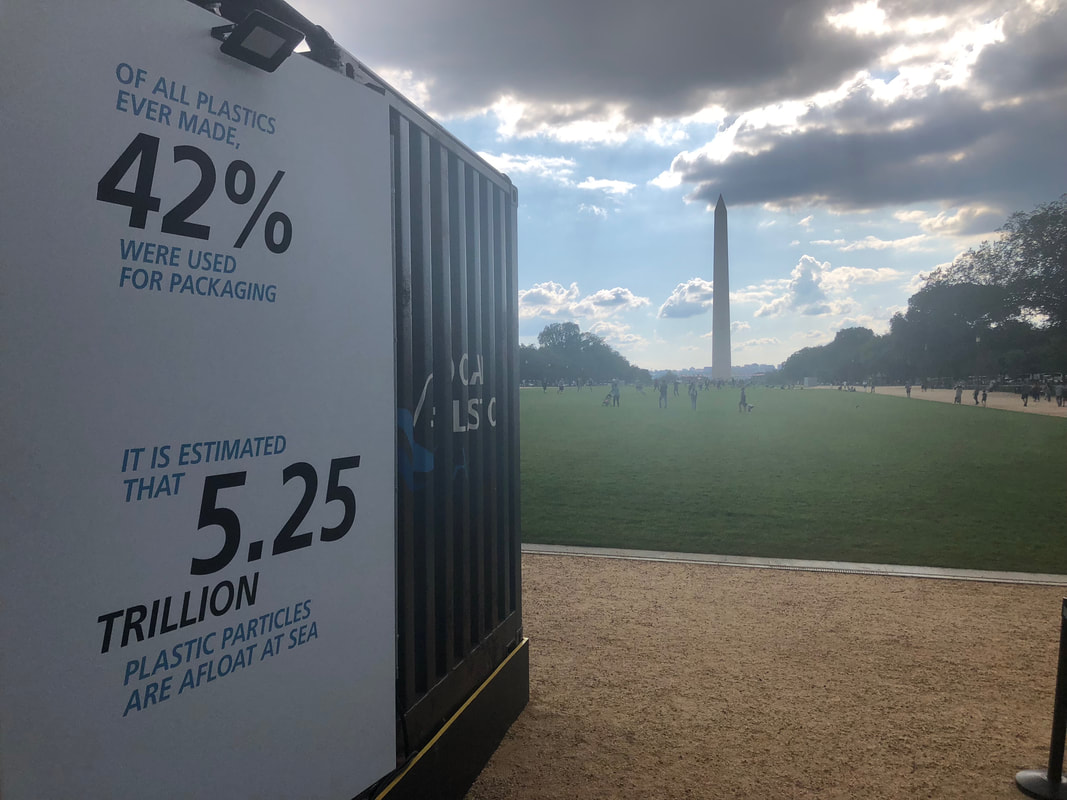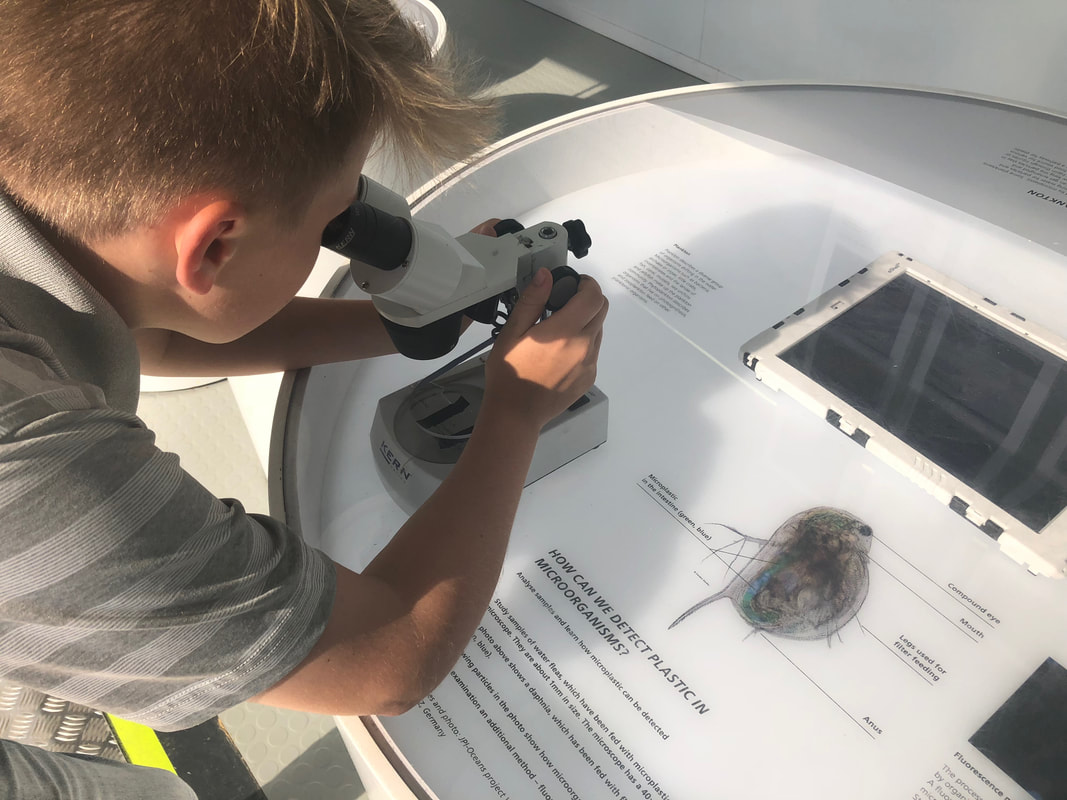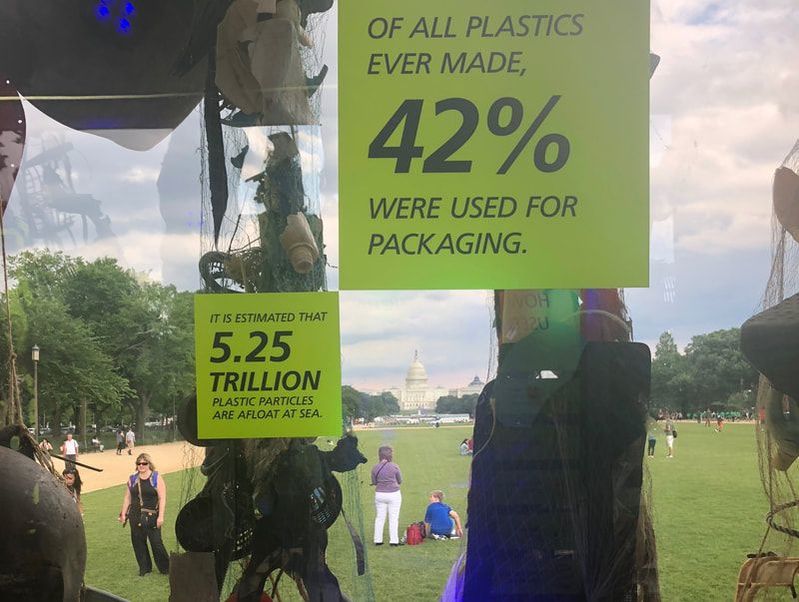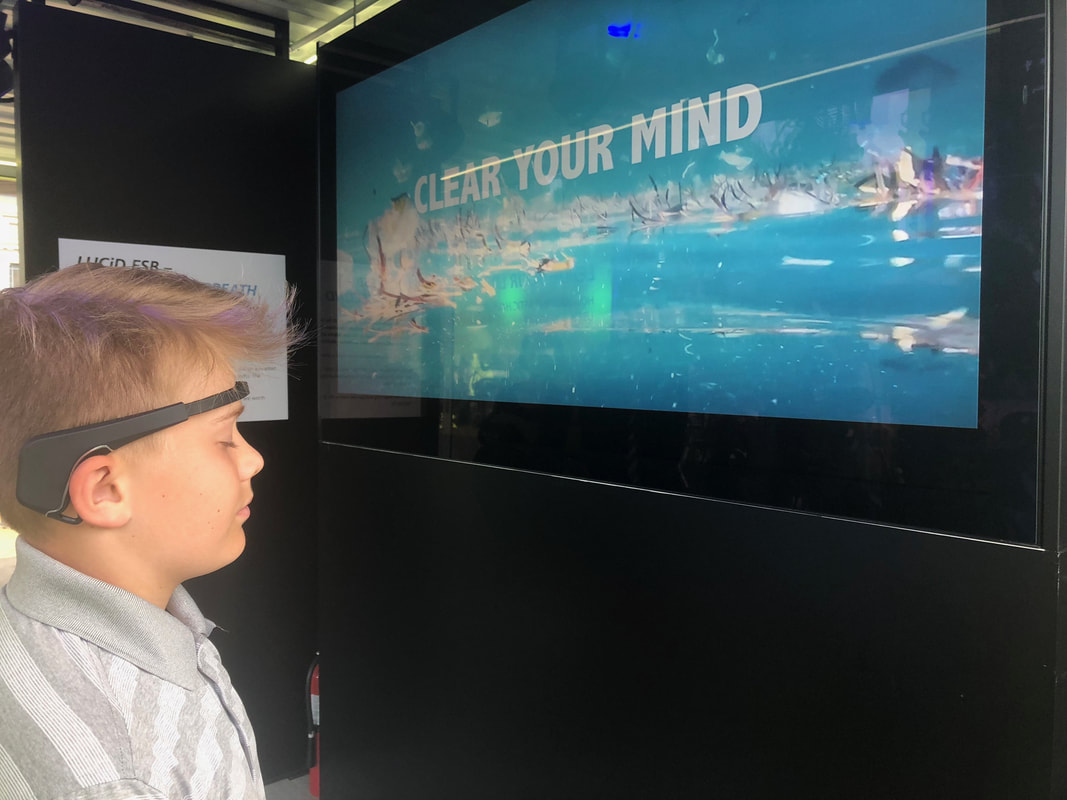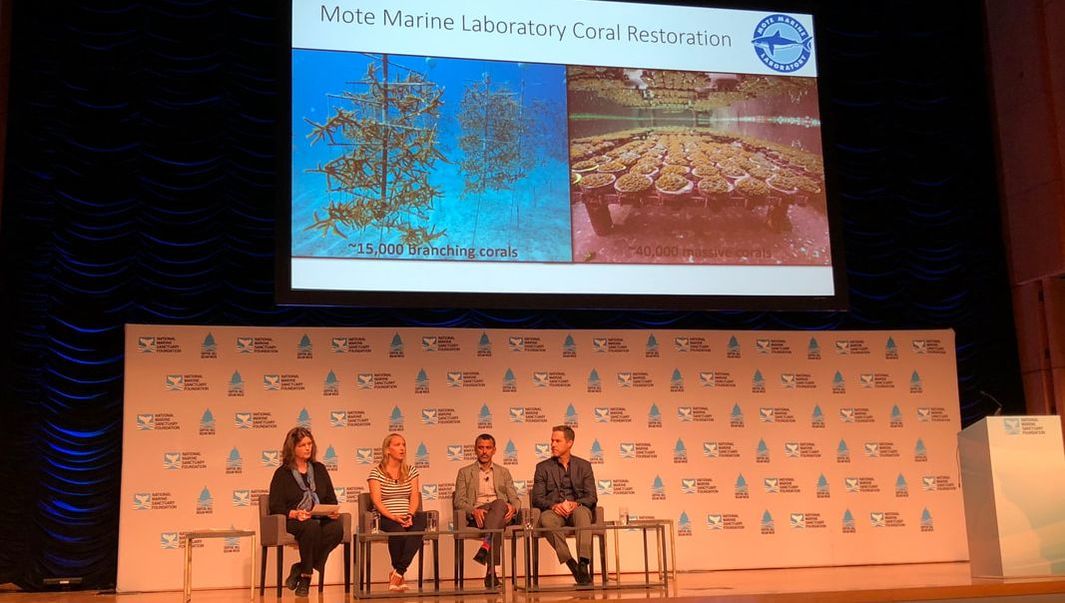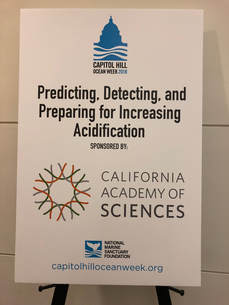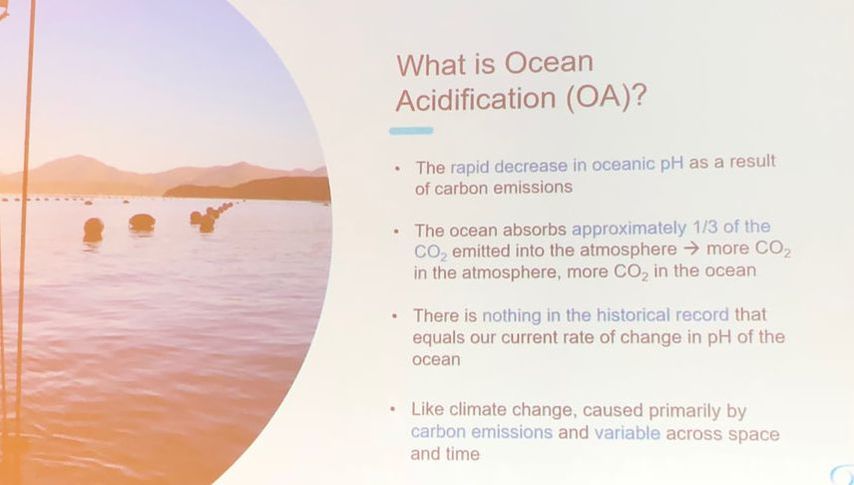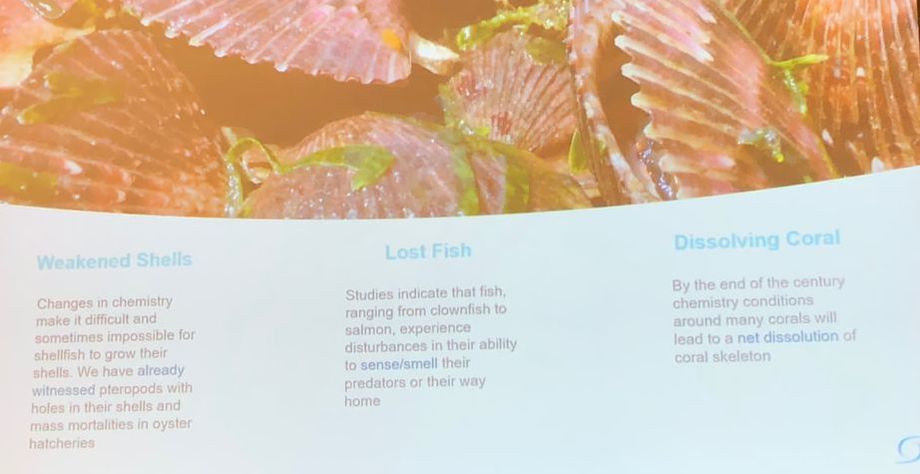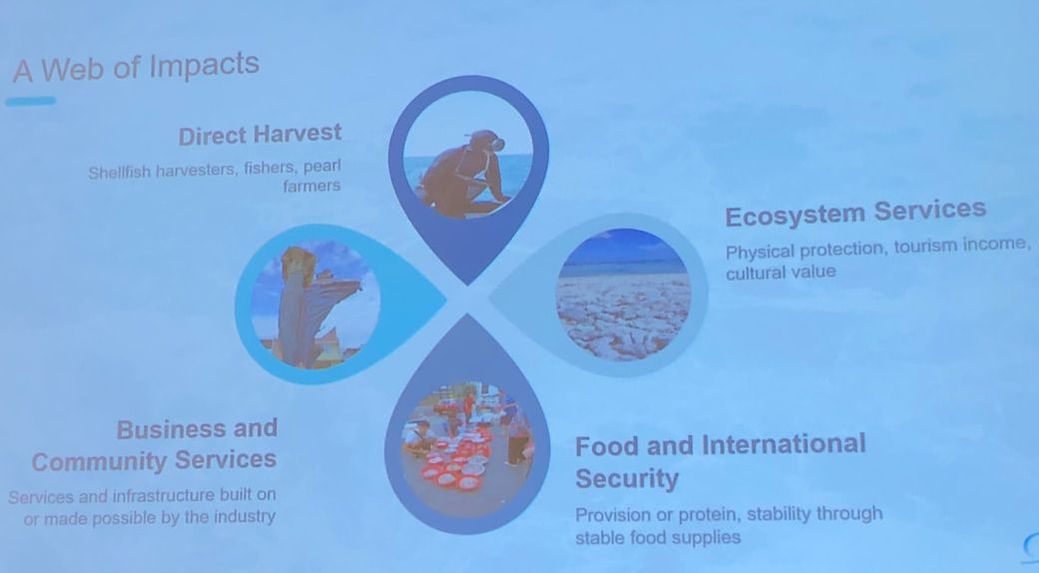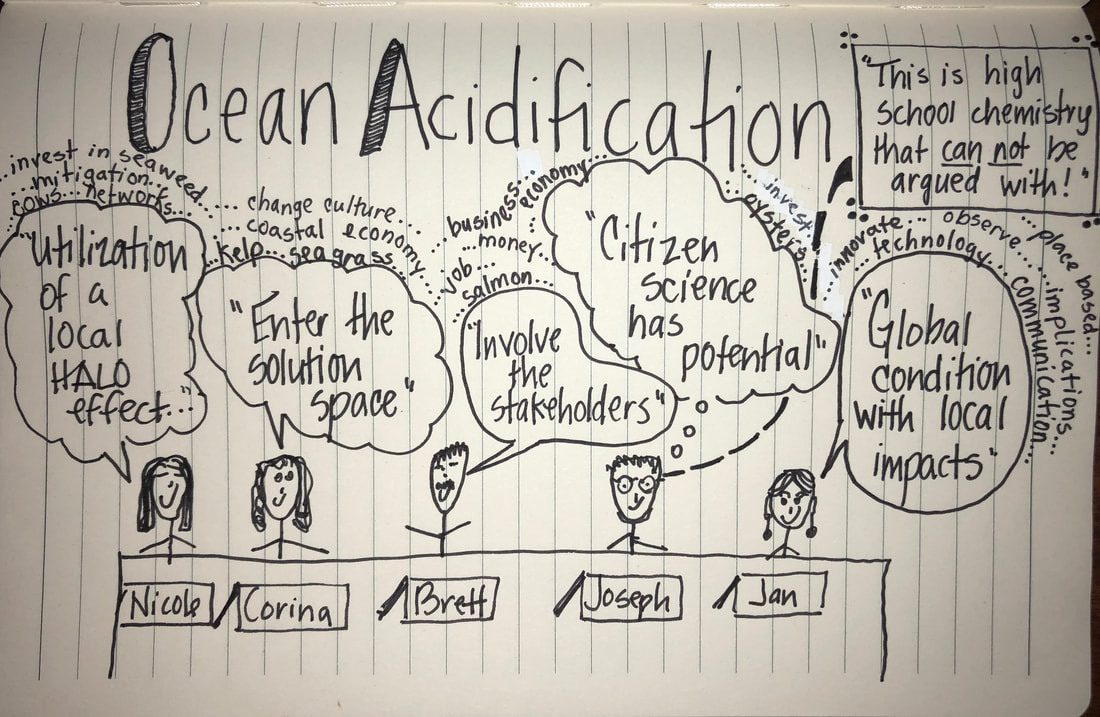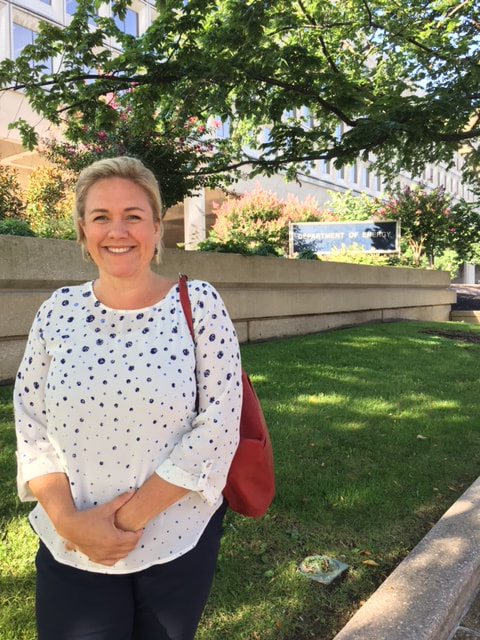|
Last week was “Capitol Hill Ocean Week” (CHOW)and the National Marine Sanctuary Foundation hosted a series of events to raise awareness around ocean systems, pollution and protection. I was able to attend three events that I found both educational and inspirational.
The first event was a pop-up exhibit on the National Mall called the Ocean Plastics Lab. The exhibit was sponsored by NOAA to showcase the global problem of ocean plastic pollution. Four shipping containers were modified for the exhibit so that the public could learn about the problem of plastic in our ocean. There was a lot of sample waste from ocean plastic and marine debris, interactive displays about the effects of plastic on marine life.
Fellow fellow Kelly was volunteering at the LUCid display, an interactive experience that is traveling with the Ocean Plastics Lab. Wearing a biosensor headband, volunteers control the video display. Apparently, in a more meditative state of mind the imagery shifts from swimming through plastic in ocean waters to seeing whales in clear water. I was pretty good at getting into a zen state!
The other two events I attended for CHOW were scientific talks about the status of ocean ecosystems. I went to sessions that related both to my personal interests and content that is part of the IB Biology curriculum I teach. The first session was titled, “Recovering Coral Reefs.” I’ve had an interest in coral health ever since I traveled to the Bahamas in 2009 to assist with a coral reef survey. Covering less than 1 percent of the ocean, coral reefs support 25 percent of marine life globally to provide an estimated $1 trillion in value to the world economy, including $300 to $400 million annual in value for food and livelihoods from tourism, fisheries, and medicine. Reefs are integral to the livelihoods and well-being of billions of people. But, we risk losing these valuable ecosystems. Nearly 75 percent of the world’s coral reefs are threatened by overfishing, habitat destruction, water pollution, climate change, and ocean acidification. Efforts to conserve and restore coral reefs are lagging far behind their rate of destruction. To preserve this amazing biodiversity, we must protect these valuable ecosystems and develop new conservation solutions and restoration techniques to protect these invaluable ecosystems.
There was a discussion by a panel of three scientists who monitor coral reefs. Greg Asner from the Carnegie Institution for Science studies global ecology and earth systems using remote sensing via satellite or airplane. He observes and maps coral reef fragmentation in effort to determine where restoration efforts should be focused. Erinn Muller is a coral health and disease scientist with the Mote Marine Laboratory in Florida. Documenting coral decline was understandably depressing for her, so she now focuses on recovery of reefs, by “outplanting” genetically variable and disease resistant coral starters. Early results suggest the outplanting effort is working, and her goal is for another 50,000 outplants next year however the program’s success will depend on the government response and dedication of funds for research and restoration of reefs. Luiz Rocha is an ichthyologist with the California Academy of Sciences. He studies mesophilic coral reef ecosystems; these are deeper reefs (200-500 ft). With each dive he discovers new species because these deep reefs are unknown and unexplored. However, the reefs are still at human induced risk. Recently he found plastic on the reef, brought to the depths when a hurricane passed through the region.
The three scientists all communicated a vision of hope and a desire to scale up the restoration projects occurring at a local level to a more global scale. The effort will required international collaboration between nations, increased funding, public-private partnerships and a continued reliance on solid science. Members of the public who support these efforts should amplify the message via social media, influence others, decrease use of plastic, and encourage governments to address climate change. #oceanoptimism
In this session, I learned how states are coping with local effects of ocean acidification as state and federal policymakers draft legislation to mitigate and adapt to ocean acidification. My home state of Washington has been particularly affected by acidification, and I was able to make some personal connections to the impacts of acidification. In fact, the University of Washington now hosts the Washington Ocean Acidification Center within the College of the Environment.
The panel include experts from a diverse set of perspectives. Jan Newton is an oceanographer in the Applied Physics Laboratory at the University of Washington School of Oceanography and School of Marine and Environmental Affairs. Karina Nielsen is a biologist and the director of the Estuary and Ocean Science Center at San Francisco State University. Nichole Price is a research scientist and director of the Center for Venture Research on Seafood Security at the Bigelow Laboratory for Ocean Sciences. Joseph Salisbury is a research professor of Oceanography at the University of New Hampshire and Brett Veerhusen is the head of Ocean Strategies and is an Alaskan commercial fisherman.
As with all my experiences as an Einstein Fellow, I am so thankful for my opportunity to be here, learning and engaging with issues of concern that resonate with me. I will take my learning back to the classroom for my students benefit.
|
Archives
July 2018
|
I give many of my IB Biology resources away, for the benefit of students and teachers around the world.
If you've found the materials helpful, please consider making a contribution of any amount
to this Earthwatch Expedition Fund.
Did I forget something? Know of a mistake? Have a suggestion? Let me know by emailing me here.
Before using any of the files available on this site,
please familiarize yourself with the Creative Commons Attribution License.
It prohibits the use of any material on this site for commercial purposes of any kind.
If you've found the materials helpful, please consider making a contribution of any amount
to this Earthwatch Expedition Fund.
Did I forget something? Know of a mistake? Have a suggestion? Let me know by emailing me here.
Before using any of the files available on this site,
please familiarize yourself with the Creative Commons Attribution License.
It prohibits the use of any material on this site for commercial purposes of any kind.
